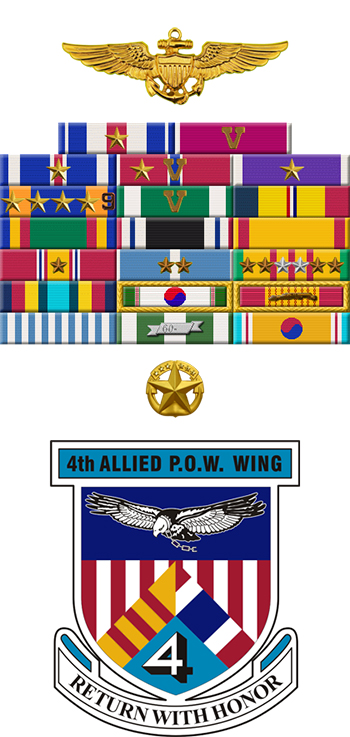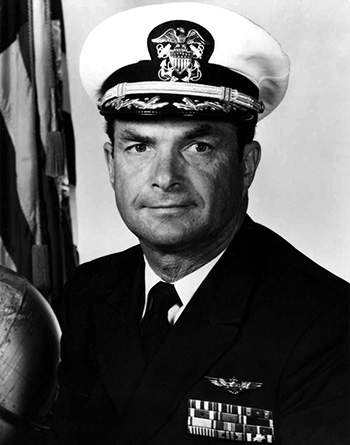
|
Ernest Melvin "Mel" Moore, Jr. |
 |
|||
| Rank, Service | ||||
Captain O-6, U.S. Navy |
||||
| Veteran of: | ||||
|
||||
| Tribute: | ||||
Mel Moore was born on June 2, 1929, in Berkeley, California. He enlisted in the U.S. Naval Reserve in January 1947, and served at Naval Station Hunters Point, California, until receiving an honorable discharge in June 1950. He then entered the Aviation Cadet Program of the U.S. Navy on January 3, 1951, was commissioned an Ensign and designated a Naval Aviator on May 29, 1952. His first assignment was as an F4U-4 Corsair and F9F-5 Panther pilot with VF-94 at NAS Alameda, California, from October 1952 to February 1955, during which time he flew combat in Korea from the aircraft carrier USS Philippine Sea (CVA-47) from December 1952 to July 1953. His next assignment was as an instructor pilot with Fleet Airborne Electronics Training Unit Pacific at NAS Moffett Field, California, from March to August 1955, followed by General Line School from August 1955 to June 1956. Lt Moore served as a flight instructor with Naval Training Command from July 1956 to July 1959, and then completed Combat Information Center/Ground Controlled Approach (CIC/GCA) School from July to December 1959. His next assignment was as a CIC and GCA Officer aboard the aircraft carrier USS Hornet (CVS-12) from December 1959 to February 1961, followed by service as Assistant CIC with the Commander, Carrier Division 15 from March 1961 to April 1962. LCDR Moore then attended A-4 Skyhawk Replacement Air Group training with VA-125 at NAS Lemoore, California, from May to September 1962. He then served as an A-4 pilot and Admin Officer with VA-56 at NAS Lemoore from September 1962 to July 1964. He attended the U.S. Naval Postgraduate School at Monterey, California, from July 1964 to May 1966, and then attended A-4 RAG training with VA-125 again from May to October 1966. CDR Moore then served as an A-4 pilot with VA-192 at NAS Lemoore and then deployed to Southeast Asia aboard the aircraft carrier USS Ticonderoga (CVA-14) from October 1966 until he was forced to eject over North Vietnam and was taken as a Prisoner of War on March 11, 1967. After spending 2,186 days in captivity, Capt Moore was released during Operation Homecoming on March 4, 1973. He was briefly hospitalized to recover from his injuries and then served Human Resources Development Officer with the Commander, Naval Air Force U.S. Pacific Fleet from August 1973 to November 1975. After completing Prospective Commanding Officer training from November 1975 to March 1976, Capt Moore served as Commanding Officer of the attack transport USS Paul Revere (LPA-248) from March 1976 to August 1977, and then as Commanding Officer of the amphibious assault ship USS New Orleans (LPH-11) from August 1977 until his retirement from the Navy on January 1, 1979. Mel Moore Flew West on November 17, 2020. |
||||
|
||||

